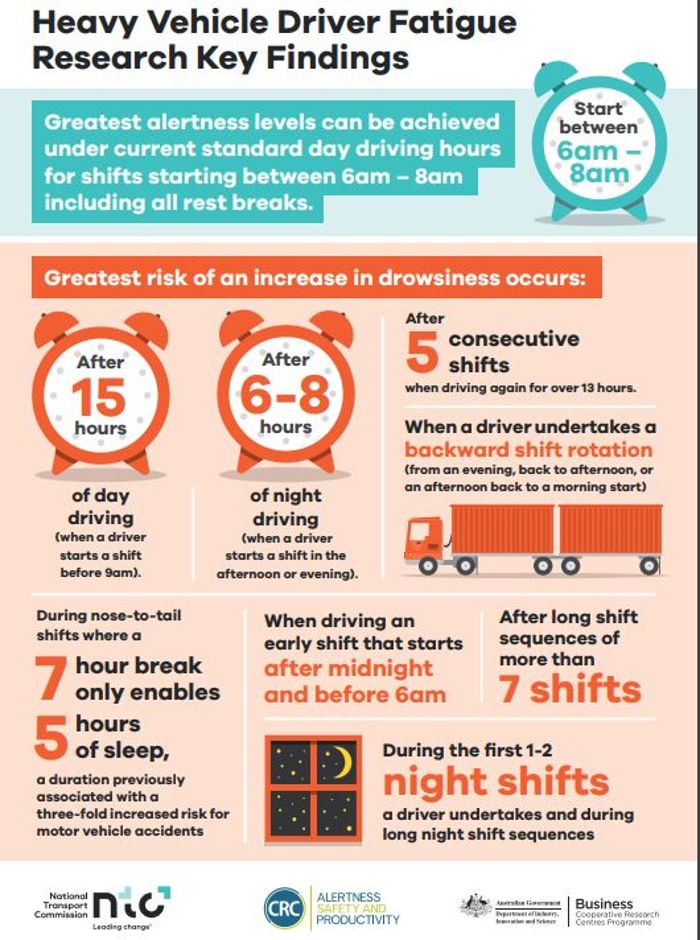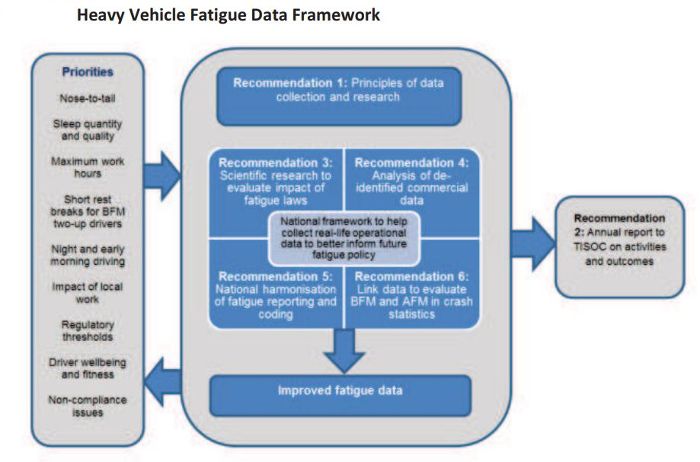As part of its long-term aim of improving safety on the country’s road network, Australia’s National Transport Commission (NTC) and the Cooperative Research Centre for Alertness, Safety and Productivity (Alertness CRC) have released the results of the world’s first study into heavy vehicle driver fatigue.
In the world’s first project of its type, the two-year scientific study evaluated alertness monitoring technology and the impacts of work shifts on truck driver alertness. The research team analyzed shift start time, the number of consecutive shifts, shift length, shift rotation, rest breaks and their likely impact on driver drowsiness and fatigue.
The Alertness CRC conducted the research as part of a wider collaboration including the NTC, the Australian government, Transport for NSW, Austin Health, Monash University, the Institute for Breathing and Sleep, and the country’s heavy vehicle industry.
 The study found that the greatest alertness levels for truck drivers can be achieved under current standard driving hours for shifts starting between 6am and 8am, including all rest breaks. Other key research findings revealed that the greatest risk of an increase in drowsiness occurs:
The study found that the greatest alertness levels for truck drivers can be achieved under current standard driving hours for shifts starting between 6am and 8am, including all rest breaks. Other key research findings revealed that the greatest risk of an increase in drowsiness occurs:
- After 15 hours of day driving (when a driver starts a shift before 9am);
- After 6–8 hours of night driving (when a driver starts a shift in the afternoon or evening);
- After five consecutive shifts when driving again for over 13 hours;
- When driving an early shift that starts after midnight and before 6am;
- During the first 1-2 night shifts a driver undertakes and during long night shift sequences;
- When a driver undertakes a backward shift rotation (from an evening, back to afternoon, or an afternoon back to a morning start);
- After long shift sequences of more than seven shifts;
- During nose-to-tail shifts where a seven-hour break only enables five hours of sleep – a duration previously associated with a three-fold increased risk for motor vehicle accidents.
 “The research involved a study of more than 300 heavy vehicle driver shifts, both in-vehicle and in a laboratory, as well as 150,000 samples of retrospective data,” explained spokesperson and theme leader for the Alertness CRC, associate professor Mark Howard.
“The research involved a study of more than 300 heavy vehicle driver shifts, both in-vehicle and in a laboratory, as well as 150,000 samples of retrospective data,” explained spokesperson and theme leader for the Alertness CRC, associate professor Mark Howard.
“We found that slow eye and eyelid movements, longer blink duration and prolonged eye closure are reliable predictors of drowsiness and fatigue. The study also confirmed the scientific link between alertness and drowsiness patterns associated with specific work shifts for heavy vehicle driving.”
The NTC’s chief executive officer, Dr Gillian Miles, said, “These findings will inform future fatigue policy as part of the NTC-led review of the Heavy Vehicle National Law (HVNL). This is critical new evidence that will ultimately help to decrease heavy vehicle fatigue risk at a time when the nation’s freight task is expected to double by 2030.”






